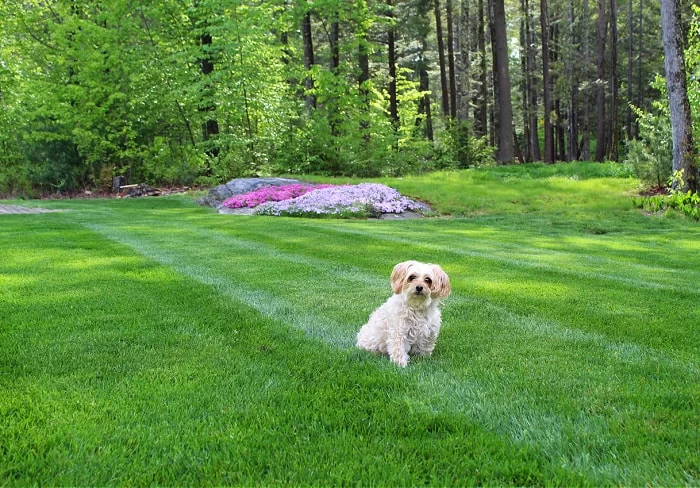
How to Care for Lawns with Pets: Tips for a Healthy Yard
As a pet owner, keeping your lawn in top condition while ensuring it's safe and comfortable for your furry companions can feel like a challenge. I’ve been there. You want your pets to enjoy the yard, but you also want the grass to stay green and healthy. Through trial and error (and a bit of advice from experts), I've learned a few tricks to maintain a lawn that’s both pet-friendly and visually appealing. Here’s how you can achieve a lush, vibrant lawn that your pets will love, too.
1. Choose the Right Grass for Your Yard
The first step in caring for a lawn with pets is choosing the right type of grass. Certain grasses are more durable and tolerant to wear and tear from pets. In my experience, Kentucky bluegrass and fescue are excellent choices for pet-friendly lawns, especially in cooler climates. However, if you live in a warmer area, Bermuda and Zoysia grass are more heat-resistant and resilient against pet damage. Think about your climate, soil type, and the level of pet activity when choosing your grass type.
2. Create a Designated Pet Area
It’s essential to give your pets their own designated play area in the yard. By setting boundaries, you can prevent them from running all over your lawn and causing damage to the grass. My own dog loves to chase the ball around, and having a specific play zone has helped preserve the health of the rest of the lawn. You can use natural boundaries like hedges or fences, or even use decorative rocks or edging to create an obvious play zone. This way, the pets know where to go, and the rest of the lawn remains untouched.
3. Proper Watering Techniques
Keeping your lawn hydrated is key, but with pets around, you need to be mindful of how and when you water it. Over-watering can cause muddy spots, while under-watering leads to dry patches that could attract your pet to dig. A good routine is watering early in the morning or later in the evening to avoid evaporation during the hottest part of the day. I’ve also found that using a sprinkler system with a timer helps ensure consistent watering, especially during hot months. This keeps the grass healthy and your pets happy without creating puddles that can attract them to dig or drink too much water at once.
4. Protecting the Lawn from Pet Waste
One of the biggest challenges in keeping a lawn pet-friendly is dealing with pet waste. Dogs tend to leave spots of dead grass where they go to the bathroom, particularly due to the high nitrogen content in their urine. I’ve had a few brown patches on my lawn because of this, but I’ve learned to manage it. The key is to quickly pick up after your pet and water the area right after they go. This helps dilute the nitrogen and minimize damage. Additionally, there are pet-safe lawn treatments available that can help neutralize the impact of pet urine on grass.
5. Regular Lawn Maintenance
Even if you have pets, your lawn still needs regular care. Mowing, aerating, and fertilizing are essential tasks to keep your yard looking its best. When mowing, be sure to keep the blades at a higher setting to prevent stressing the grass, especially since pets tend to run on it. Aerating helps with proper water and nutrient absorption, which is crucial for maintaining a healthy lawn. I’ve found that natural fertilizers, such as compost or organic options, are ideal for pet-friendly yards because they are safe for pets and help the lawn thrive.
6. Dealing with Lawn Damage from Pets
Sometimes, no matter how careful you are, pet activity can cause damage to the lawn. Over time, dogs may create bare patches from constant running, digging, or marking their territory. In these cases, overseeding or patching up those spots is necessary. I’ve had to reseed areas a few times, and it’s always been worth the effort. Be patient and give the new grass time to establish itself. Additionally, some pet owners use pet-friendly lawn repair products to speed up the healing process, which can be helpful.
7. Avoid Harmful Chemicals
Another important aspect of pet-friendly lawn care is avoiding harmful chemicals. Many chemical pesticides, herbicides, and fertilizers can be toxic to pets, especially when ingested. I've switched to organic and pet-safe products to ensure my lawn remains safe for my animals. There are plenty of natural alternatives available for pest control, weed prevention, and even lawn fertilization. These products are just as effective and much safer for pets, so I always recommend them for pet owners.
8. Keep Your Pets Safe with Lawn Enrichment
Last but not least, remember that caring for your lawn is not just about the grass. It’s about creating a safe, stimulating environment for your pets. Incorporate pet-friendly elements like shaded areas, water features, or pet-safe plants. My dog loves to explore the flower beds, so I’ve made sure all the plants in my garden are non-toxic to animals. Creating a space that’s both beautiful and safe will make your pets feel more at home while also allowing your lawn to thrive.
In the end, caring for a lawn with pets doesn’t have to be difficult. By making the right choices and keeping a consistent routine, you can maintain a gorgeous, pet-friendly lawn that both you and your pets will enjoy. The key is balance: you want a lawn that’s healthy and beautiful, but also one that’s safe and enjoyable for your furry companions.








